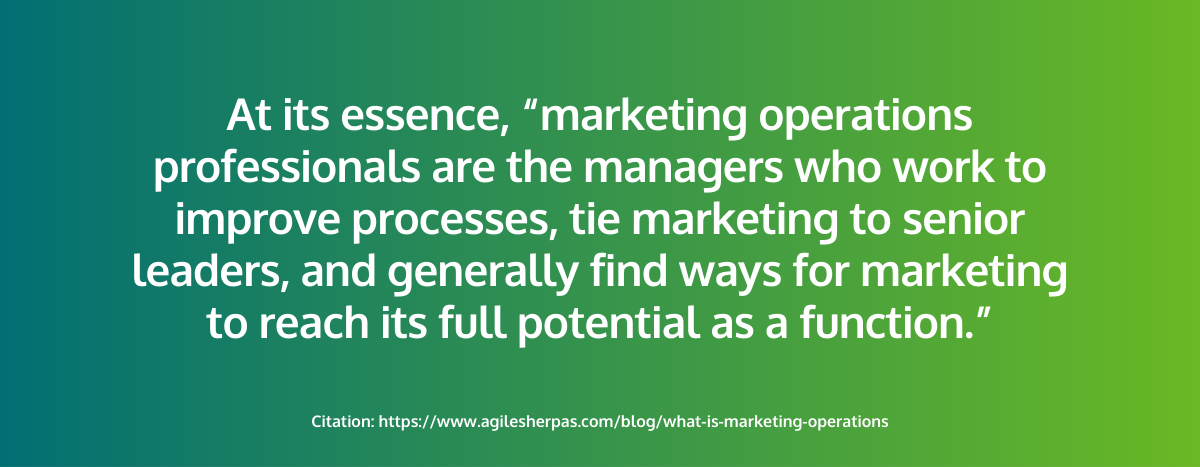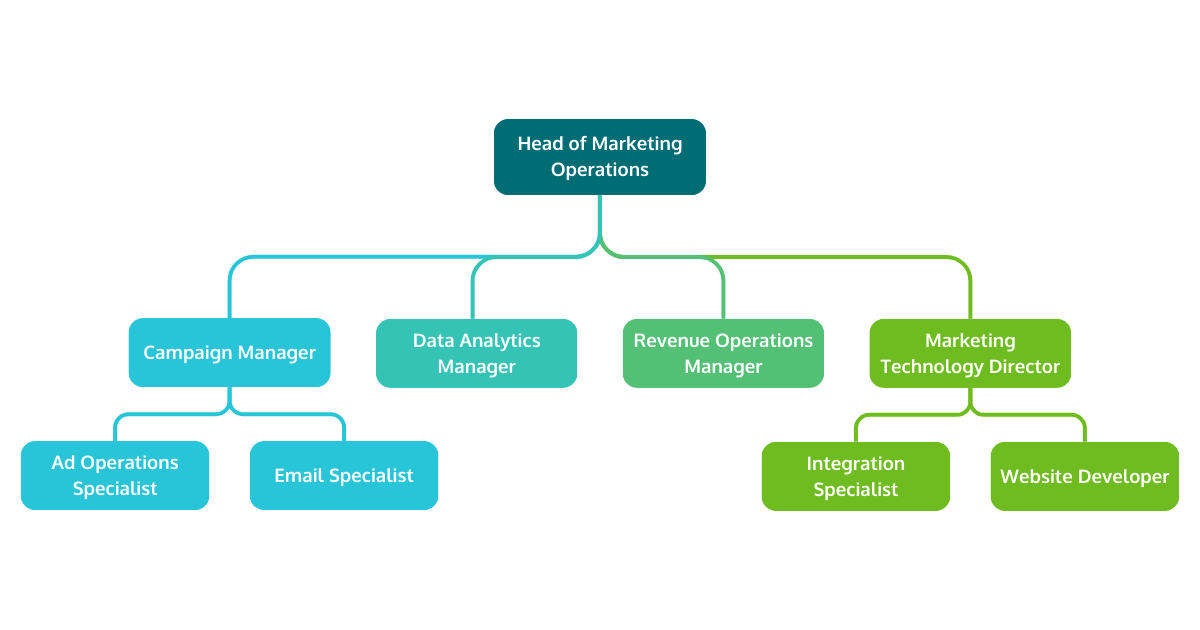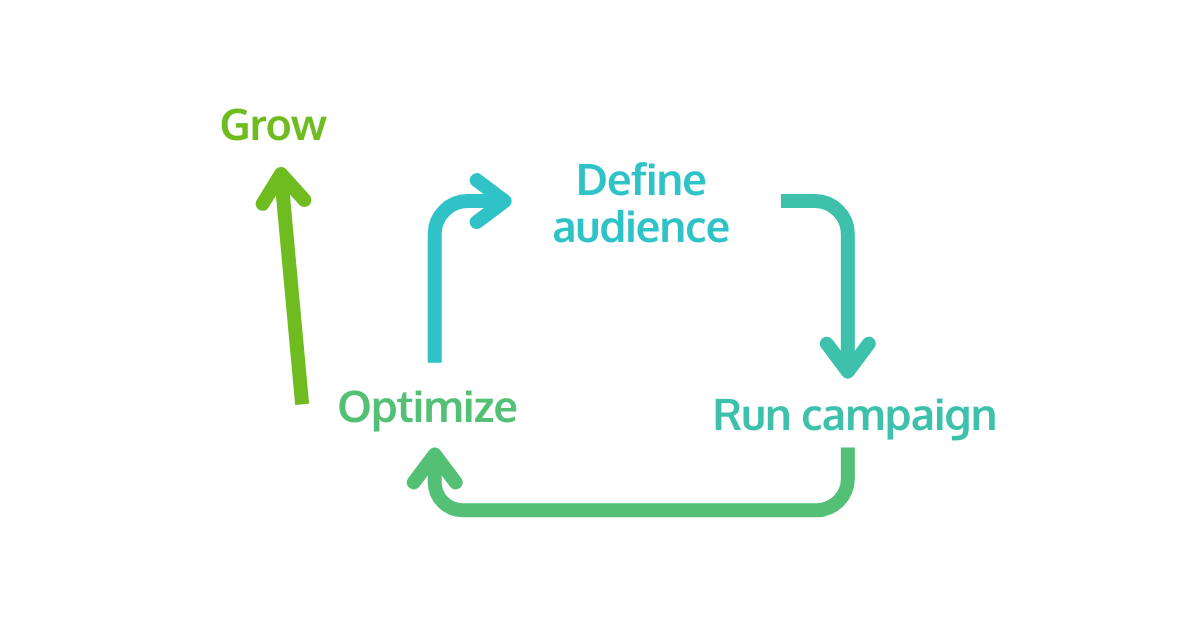-
- marketing agility
- Teams
- Organizations
- Education
- enterprise
- Articles
- Individuals
- Transformation
- Solution
- Leadership
- Getting Started
- business agility
- agile management
- going agile
- Frameworks
- agile mindset
- Agile Marketing Tools
- agile marketing journey
- organizational alignment
- Agile Marketers
- People
- Selection
- (Featured Posts)
- strategy
- agile journey
- Metrics and Data
- Kanban
- Resources
- Why Agile Marketing
- agile project management
- self-managing team
- Meetings
- Scrum
- agile adoption
- scaled agile marketing
- tactics
- scaled agile
- AI
- Agile Meetings
- agile marketing training
- agile takeaways
- Agile Leadership
- agile coach
- enterprise marketing agility
- Scrumban
- state of agile marketing
- team empowerment
- Intermediate
- agile marketing mindset
- agile marketing planning
- agile plan
- Individual
- Team
- Videos
- agile marketing
- kanban board
- Agile Marketing Terms
- agile transformation
- traditional marketing
- FAQ
- agile teams
- Agile Marketing Glossary
- CoE
- Scrumban
- agile
- agile marketer
- agile marketing case study
- agile marketing coaching
- agile marketing leaders
- agile marketing methodologies
- agile marketing metrics
- agile pilot
- agile sales
- agile team
- agile work breakdown
- cycle time
- employee satisfaction
- marketing value stream
- marketing-analytics
- remote teams
- sprints
- throughput
- work breakdown structure
- News
- agile brand
- agile marketing books
- agile marketing pilot
- agile marketing transformation
- agile review process
- agile team charter
- cost of delay
- hybrid framework
- pdca
- remote working
- scrum master
- stable agile teams
- stand ups
- startups
- team charter
- team morale
- user story
- value stream mapping
- visual workflow
Why You Need Marketing Operations to Execute Effective Campaigns

While many marketers can barely tell you what marketing operations means, the reality is that their role is essential for running effective campaigns at scale. Aligning with marketing operations from your first campaign brainstorm through reporting on your completed campaign ensures that your campaign runs like a well-tuned engine.
Marketing operations (or, more specifically, campaign operations) ensures that each step of the campaign happens exactly as intended, measures the campaign goals, and — most importantly — demonstrates the impact on revenue.
Demand generation and growth teams are constantly under pressure to deliver results on their campaigns so demonstrating how each campaign helps move the needle for revenue aligns marketing with the company goals of increasing sales.
But effectively showing return on investment (ROI) requires a strong foundation of technology and processes to deliver reliable metrics in a way that’s accessible to the team. Of course, this is a marketing operations professional’s specialty!
Understanding the Role of Marketing Operations
Your marketing operations team may be a single person or a whole team of specialized individuals. How many people are on the team can depend on several factors including:
- Size of the company
- Size of the marketing team
- Type of product
- Go-to-market motion (PLG, sales-led, inbound, etc.)

Larger and more complex teams may further divide responsibilities into specialized roles including campaign operations, revenue operations, advertising operations, data analytics, marketing technology, email operations, digital/web management, and more.

With so many functions on the team, who should you call for help in planning and executing your campaigns? Let’s break down some of the roles and functions you may have in your marketing operations team.
Market Research and Strategy Development
The marketing and sales tech stack usually centers on a CRM to keep track of everyone who has engaged with your brand or is a target for sales outreach. While that alone can be a treasure trove of insights, there may also be market intelligence, data enrichment, or contact discovery tools in the stack.
The marketing operations team often owns the integration between these tools and can provide access or insights to the value they hold. If you’re looking for more detailed attributes on a target account list, new audience demographics to build better targeting, or uncovering patterns you never expected in your website traffic, your marketing operations team can be your guide.
Campaign Implementation and Execution
Campaign execution is where the marketing operations magic happens. Anyone can launch Google ads but to build a campaign perfectly targeted to your audience, that tracks contribution to your pipeline and every activity in between, you’ll want a marketing operations professional on your team.
From the first steps of deciding what’s possible, to ensuring the right content is delivered to the right audience (at the right time, and not too often and…), and reporting on results - marketing operations is the function that makes things happen.
Data Analytics and Measurement
“Half the money I spend on advertising is wasted, and the trouble is I don’t know which half.” The quotation often attributed to John Wanamaker still often rings true for marketers. Now that so many online interactions are trackable, the focus on ROI is stronger than ever.
Understanding how those marketing touch points drive company revenue is a major part of every company’s budget allocation.
In smaller teams, data analysis may be part of the marketing operations team but with enough people in specialized roles and a need for more granular detail, a dedicated analytics team will manage a more complex data processing flow.
It’s time to make friends with whoever runs the numbers in your organization. Finding trends in your CRM or website traffic helps you build a flywheel where the insights drive better optimization and scale.

Technology Integration and Automation
The marketing tech stack has expanded and contracted like an accordion over the years. Lately, there’s been a trend of consolidating data and functions under one roof despite the availability of numerous specialized apps, add-ons, and plug-ins to serve specific needs.
This helps to prevent silos in an organization, making more accurate data accessible to more people.
Tools like HubSpot are constantly innovating to bring more processes into their platform and eliminate the need to sync data and manage user access across multiple platforms.
When adding a new tool to the marketing tech stack, it's important to ensure that it works well with the existing tools to achieve the best results.
For instance, if you're using HubSpot and want to run ads on different platforms, the marketing operations team will make sure that data smoothly moves between your ad platform and HubSpot, especially if it's not one of the platforms HubSpot directly connects to like Google, Meta, or LinkedIn.
Collaboration and Alignment with Sales Teams
Marketing and sales both want to drive revenue in the pipeline but need different answers from the data collected in your CRM. Sales teams want to quickly get up to speed with a person’s activity so they can have a contextually-relevant conversation. Marketers want to provide as much context as possible and accurately attribute their activities.
Marketing operations teams need to balance the needs of both teams to streamline the hand-off from marketing to sales. Demand generation teams keep other departments – especially sales -- up to date on what campaigns are launching but it’s marketing operations professionals who ensure the new contacts are getting to the right sales team member, at the right time, with enough information to act quickly.
Before proceeding to see the steps to launching an effective marketing campaign, why don't you take a second to see if bad processes are eating up your budget?
The Steps to Launching an Effective Campaign
Let’s pretend you’re a CMO at a medium-sized software company going to market with a product-led growth motion. Your company’s flagship product is a platform designed to simplify calendar and task management.
Your goal for Q4 is to get new users activating a free trial through repeatable and scalable campaigns on paid channels. Your goal for the following year includes a marketing-contributed percentage of revenue.
To launch a pay-per-click campaign on your platform of choice, your planning checklist might look something like this:
- Audience selection
- User experience strategy
- Creative (graphic design and copy)
- Technology for tracking
- Technology for reporting
- Post-trial adoption and upgrade strategy
- Retrospective analysis
Now that we are familiar with all that marketing operations can do, how should they be involved in this planning process?
Audience Selection
The marketing operations team are usually the ones most familiar with your CRM data. When you’re defining your target audience and how to reach them, marketing operations will analyze data to define the best attributes to target for effective audience reach.
In this case, your marketing operations team could look for existing users who upgraded from a free trial to a paid subscription the fastest, patterns in demographic or behavioral attributes that led to high engagement and revenue, and channel(s) that have historically delivered the highest conversion rate for trial.
Experience Strategy
Thinking through what happens after a prospect clicks on the ad is a crucial part of planning. Are you directing them to an app store? To a landing page? Educational content with an embedded call-to-action? With a well-defined audience, you can anticipate their needs and expectations to deliver the highest value experience - giving your campaign the highest chance at success.
This step is the most essential part of the project for marketing operations to be involved in. Understanding when and how the prospective user interacted with each asset allows marketing operations to build the tracking mechanism that will help you report on every aspect of your campaign.
Creative
Depending on the complexity of your operations team structure, your marketing operations team may be the ones who define the technical specs to your creative team. Your creative teams need guidance for character limits, image dimension, file sizes, file types, etc to deliver the right assets. An ad operations specialist, campaign ops specialist, or a generalist on your marketing operations or demand generation team may handle this function.
Technology for Tracking
Given the user journey from your strategic planning in step 2, your marketing operations team will figure out the best way to capture each step of a prospective user’s journey. To analyze and benchmark against other campaigns, you must collect these data points in a way that integrates with your existing tech stack. Once you define the data collection strategy and technology...
Technology for Reporting
...the marketing operations team will ensure that the data is included in campaign-specific reporting and department-wide or even company-wide performance reporting. The marketing operations team will determine whether your CRM’s existing tools are enough or if you need a more complex tech stack to bring it all together.
It’s important for the demand generation team to stay in communication with the marketing operations team in this step to be sure the most important aspects of performance are well defined and accessible to the people who need them.
Marketing operations can help create reports that drive ongoing performance optimization like percentage of goal met, conversion rate, cost-per-acquisition, return on ad spend, and contribution to revenue.
Post-Trial Adoption Strategy
The strategy to move users from a free trial to a paid subscription is a shared effort between product management, marketing, customer success, and user experience. In this case, we know the stakeholders expect the marketing team to achieve a specified percentage of revenue in the following year.
With that in mind, the demand generation team will keep a close eye on the user experience to ensure it aligns with their campaign strategy and creative to keep users engaged from their first brand interaction to their first paid invoice.
The marketing operations team will ensure your tech stack is tracking every step of the way.
Retrospective Analysis
Even with the best laid plans, there’s always room for improvement. Leveraging a framework like Agile allows everyone involved in the process to share their feedback and ideas for the next campaign through a retrospective meeting.
It can be difficult to strike the balance between building for scale and delivering a minimally viable product but a structured approach to review and planning for improvement keeps everyone’s expectations aligned and moving forward.
Partnership Is Essential
A tight partnership between demand generation and marketing operations results in better targeting, tracking, reporting, and ultimately, more growth for the company.
By involving marketing operations at every step of campaign planning and execution, you’re ensuring accurate audience selection, streamlining the experience strategy, and enabling precise tracking and reporting. Marketing operations also facilitates collaboration with other teams in your organization, ensuring a smooth transition from marketing to sales and even product development and user experience.
As the industry demands more personalized and data-driven marketing strategies, the role of marketing operations will only become more necessary in achieving business goals and driving revenue growth.
Topics discussed

Danielle Urban has been helping small and medium sized companies make sense of their data in HubSpot for over a decade. Her prior experience at B2B SaaS start-ups allowed her to hone her operational expertise while executing campaigns for growth. Today, as a consultant, Danielle's understanding of the Hubspot-centered technology stack combined with her mastery of demand generation tactics makes her an invaluable asset to her clients.
Improve your Marketing Ops every week
Subscribe to our blog to get insights sent directly to your inbox.


